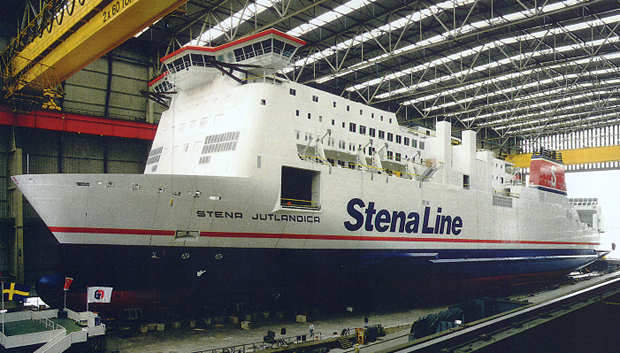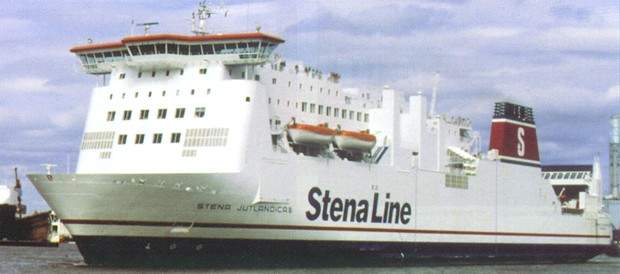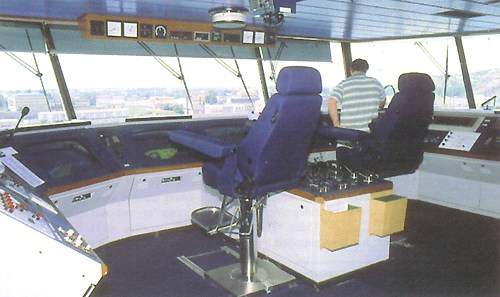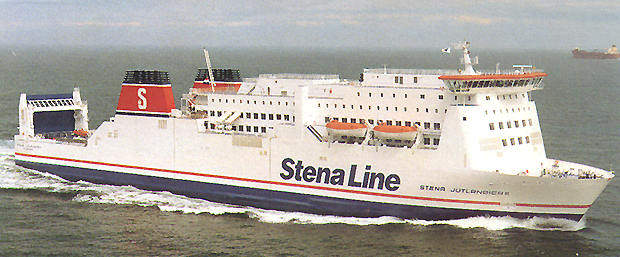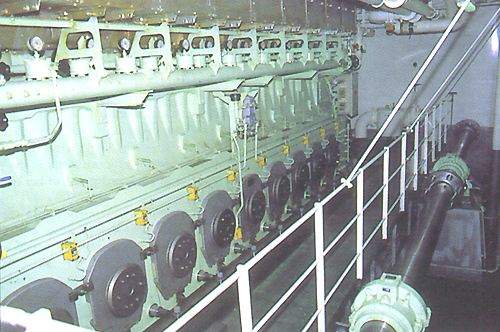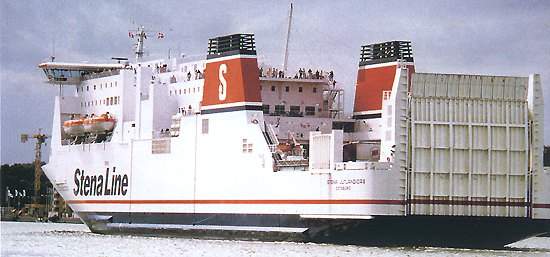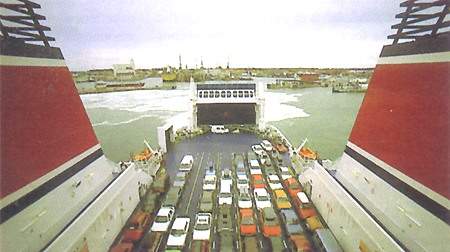Stena Jutlandica was the largest vessel in the Stena Line fleet until the launch of Stena Hollandica in May 2010.
Jutlandica operates between Gothenburg (Sweden) and Frederikshavn (Denmark). The 11-deck vessel is used as a cargo ship during the low season, and as a car / passenger ferry in the summer months. The ship was built by Van der Giessen (now IHC Krimpen Shipyard) in the Netherlands in March 1996.
Design
Jutlandica‘s hull features a bulbous bow and transom stern. A double bottom runs between the fore and aft peak bulkheads outside deep tanks.
The stern is fitted with a ‘duck tail’ to accommodate a shore-based linkspan for trains. Decks 3 and 5 are strengthened with longitudinal frames and transverse webs. Longitudinal frames are also fitted in the hull’s bottom section.
Facilities onboard Jutlandica
Jutlandica was designed with a capacity of 1,500 passengers in day accommodation on short international voyages. Deck 7 accommodates a 400-seat bar / lounge and a 60-seat ro-ro restaurant. Deck 8 includes the 270-seat restaurant, a 35-seat promenade, a 60-seat fast food area, a drivers’ restaurant and lounge, the galley, the central stairhall, a 515-seat self-service restaurant and the stairhall aft. A total of 50 four-berth cabins were provided for freight drivers.
The stern ramp / door of the hoistable guillotine type is 14m long and 16m wide, and the bow door is 5.8m wide. The port side of the vessel features two side ramps on Deck 5, one forward and one aft. The vehicle decks have seven lanes for trailers, with a total lane length of 2,000m. The vehicle decks’ free height is 4.9m.
Railway wagons can also be loaded on four tracks on the main deck, so the stern door to the main deck is of the guillotine-type. The total rail track capacity on-board is 600m, sufficient to accommodate an entire freight train. Deck 5 incorporates a hoistable car deck, offering 666 lane metres and a free height of 2.1m. The ferry’s freight capacity in its ‘pure freight’ role is 122 trailers.
Propulsion of Jutlandica
Jutlandica‘s propulsion plant consists of four medium-speed non-reversible, turbocharged MAN B&W diesel engines, each developing 6,480kW at 550rpm. Two engines drive together one controllable pitch propeller via a twin-input Renk Tacke marine reduction gearbox, type NDSHL Z600. Vulkan RATO-S 4311 flexible couplings are fitted between main engines and gearboxes.
The vessel is driven by two NiAl bronze four-blade high skew controllable pitch KaMeWa propellers, each with a diameter of 4,800mm, and capable of a maximum power transmission of 12,960kW.
Directional control when manoeuvring is enhanced by two bow thruster units, also from KaMeWa.
Each thruster consists of a stainless steel CP propeller, hydraulically operated with electric remote controls and driven by a vertically positioned 1,500kW ABB squirrel cage motor at l,000rpm.
Auxiliary power is derived from four 1,670kW diesel alternator sets. Each alternator set, driven by a MAN B&W 8L 28 / 32 H marine diesel engine, develops 2,088kVA / 50Hz at 750rpm. Emergency power is supplied by a 442kW emergency diesel alternator set.
Automation and control
Stena Jutlandica is fitted with the Windows NT-driven, Vision Integrated Bridge System, manufactured by Sperry Marine. It allows the captain to pre-programme the entire voyage and change it when necessary.
The Differential Global Positioning System shows the ship’s position on the Electronic Chart, displayed on two screens of the Sperry Voyage Management System.
Advanced radar systems detect and display obstacles. All of the ARPA targets of the radar systems are transferred to the VMS.
An electronic-operated telephone exchange is provided. Telephone sets are installed throughout the vessel. To observe the shell doors, the cleatches and the machinery spaces, a closed television surveillance is installed with a number of cameras in the ro-ro spaces and the machinery spaces.

